-
Content Count
357 -
Joined
-
Last visited
Content Type
Profiles
Forums
Gallery
Articles
Gun Dealer's and Fieldsports Shop's
Reloading Room
Blogs
Calendar
Store
Classifieds
Posts posted by Meroman
-
-
Nice birds, they've got great colour in them.
-
Here's an article written by Paul Girvan a few years back.
Every once in a while, a question from an eager novice or newcomer appears in Cage & Aviary Birds, asking how to breed mules from a Goldfinch or Siskin that they have just acquired. The limited space available means that the answer is usually restricted to basic hints on success in the art of muling.
For many years now, i have taken great delight in trying to produce miniature mules. At first, i did so because i was fascinated by the idea of going against nature and breeding something both beautiful and unique. More recently, though, I have concentrated on providing quality miniatures for the show bench, and while i won many best miniature mule awards at my local C.B.S shows and even at our all britsh shows, my proudest moment with miniatures had to be winning best miniature at the prestigous Irish Bird Breeders Society show in Dublin in 2004 with a Siskin mule.
Hundreds, probably thousands,of miniature mules are reared each year, and their breeders should be applauded, as not everyone who tries is successful. There is probably no "right way" -and definitely no "wrong way"- but i would like to highlight two methods that have rewarded me.
Both involve unflighted Finches and unflighted Canaries. Although a proven muling finch can be relied upon to carry out his duties even with a Canary that has previously been mated with its own kind.
After the young Canaries have moulted out and cocks and hens have, hopefully, been correctly sexed, i like to introduce the finch to his intended partner. Ideally, this should be in a double breeding cage, with just one perch situated at one end of the cage. This keeps both birds fit and flying from the perch to the end of the cage and back, usually resulting in approx 2 metres of flight.
This is especially important when Siskin cocks are used, because they tend to put on weight through lack of exercise and overfeeding on Niger and Hemp seed,which they will seek out above all other seeds, resulting in obese birds that are useless to any breeding programme. They should be restricted to a good Canary mixture with no added Niger or Hemp.Pairs are kept together all winter and ,hopefully ,come spring, the combination of familiarity, and the fact that they have shared the same perch for months, will have created a bond.
If the birds have bonded, the signs will be obvious come April, when the Finch cocks will be seen feeding the Canary hens as their begging cries become more persistant as the breeding season approaches. This is more evident with the Siskin cocks, which seem to be more tolerant of our presence in the birdroom. Goldfinches ,however, seem more shy, and a bond can often only be confirmed by peering through the corner of a window or the gap of a half-opened door.
When the hens are ready to go to nest, they will be seen carrying mouthfulls of whatever nesting material is available to them : wood shavings, feathers or newspaper. When this is witnessed the nest pans can be introduced along with proper nesting material.This is an important stage for me. At this point, I treat my Siskins and Goldfinches differently. I am sure that other breeders have their own way, but this method works for me, with 23 miniature mules bred from 4 hens in 2004.
When the nest is complete, i split the Siskin cock and Canary hen by way of a wire divide every evening. I reintroduce him in the morning, after i have replaced any eggs laid with dummy ones. This is done until the clutch is complete.The Siskin cock is then kept apart as before, because Siskins, above all other british finches, have a tendancy to eat the eggs and cannot be trusted !!!!.
However, more often than not the Siskin can be relied upon to fertilise the eggs in the first round. All going well, he can be reintroduced once the young mules have hatched, where he will happily carry out his parental duties [help with feeding the young] even after the youngsters have left the nest.I use different tactics in trying to breed Goldfinch mules at this stage. Instead of leaving the Finch cock with the Canary hen, I shut him off, again by use of a wire mesh divide, and I run a Canary cock with the hen until her clutch is complete. I do this firstly, because I can obtain young Canaries for the following year, and second, as the Goldfinch sometimes does not come into full breeding condition until May: eggs laid before this are usually clear.
When the young Canaries hatch- and not before, because Goldfinches, like Siskins, are partial to eggs- the finch can be returned to the hen.
One of the benefits of my way with Goldfinches is that, when the hen is ready to go to nest for her second round, the Canary cock to which she was previously mated can be brought into view. I do this by way of an all-wire cage suspended from the ceiling. With any luck, she will respond to his singing, and the Finch will successfully mate with her, resulting in a cluth of fertile eggs.This should be done four or five times during the course of the day or evening, for no more than ten minutes at a time. It is also important that the fancier leaves the bird- room at this point as the Goldfinch- and who can blame him? - likes his privacy.
In producing show quality miniature mules, my best results have come from pairing yellow Siskin cocks to yellow green Fife hens, or yellow Goldfinch cocks to yellow half Fife, half Irish Fancy hens.Many people advocate the use of coloured (red factor) Canaries. In my opinion, whilst these tend to produce quite colourful miniatures, when the Goldfinch is used, the offspring tend to be on the large size and do not quite catch the judge's eye. Maybe if the smallest intensive red hens were used instead of today's exhibition reds, which, to me, seem to have grown larger, some nice eye-catchers would grace the show bench.
I hope this article helps other fanciers, be they newcomers or 'old hands', to be successful and inspires them to pick up a pen and share their knowledge with all of us.
-
 2
2
-
 1
1
-
-
What birds did you put in your new flight?
-
Good luck with them Gnipper, the goldie usually doesn't come into breeding condition until mid to late may so if you get an early round of blind eggs dont lose faith in the pair.
-
 1
1
-
-
You've some nice birds there. Great to see goldies breeding in cages.
-
Tenbob I think its going to be one of those seasons, I've only bred three chicks from seven pairs (goldies,siskins and chaffies) so far and there's not that long left to turn it around so I'm not holding out much hope for the next few weeks.
-
 1
1
-
-
Indeed Fireman
 I agree it has to be the weather... Good luck with the bullies, anyone I've spoken to here that's breeding them are not having much joy with them with one exception, a mate of mine is putting native bullie eggs under Siberian hens and they are rearing them for him...
I agree it has to be the weather... Good luck with the bullies, anyone I've spoken to here that's breeding them are not having much joy with them with one exception, a mate of mine is putting native bullie eggs under Siberian hens and they are rearing them for him... -
 1
1
-
-
My season so far has been bad to say the least. I have one chaffie and three siskins to the sticks at this point, I've had lots of clear eggs, hens jumping the nest because of thunderstorms at night (I assume) and nests being torn apart by cock birds in the same flight.
I've also lost three birds since May which does not help.
The clear eggs make me think I didn't get my birds into good breeding condition but I've done the same thing for years now with much better results.
The joys of keeping Natives I suppose!!
-
 1
1
-
-
Sorry to read that Keeper its always a challenge with natives......
-
Ive got a Siskin on 5 eggs from a goldfinch cock so hopefully some nice hybrids
Any success with the Goldie.siskin pairing Keeper?
-
Yes Neil, the South county show is one of the oldest cbs shows in Ireland and still going strong. The INBBS run their young stock show in conjunction with it the October bank holiday weekend and then have their main show the third weekend the following January every year...
Both shows are well worth a visit...
-
 1
1
-
-
Hope you get them to the sticks fireman....What livefood are you using?
-
 1
1
-
-
-
I've only ever met him once, a true gentleman and a top birdman is Alan...
-
An article written by Alan Haury.
I have always had a great fondness for Lesser redpolls. A Lesser Redpoll cock was the very first bird that I owned. I was seven years old. This bird lived in an old budgie cage in the house and I fed it on mixed canary seed and family left overs !! The area I lived in had lots of Lessers. We had different names for them (Tillys – mountiers ). Many local birdmen would always try to obtain the ones with the red breast. You could obtain these birds for £1 a pair !!!
As I got into my early teens I started to seriously breed British Birds (Goldies were the first I bred). I started showing birds when I was fourteen. At the local show the junior section was very competitive. On leaving school I showed as a partnership with a friend called Chris Coulton. He was a few years older than me and his Dad took us to the shows.
One Saturday at Skelmersdale Show we were lucky enough to get Best Novice CYB and Best Novice Exhibit. A local hero of ours Mr Terry McCracken won Best British Bird In Show and Best Exhibit with a greenfinch. We always admired the quality of Terry’s show team.Three to four days after the show Chris received a letter from Terry saying how wonderful the Lessers looked. I was well chuffed that such a good birdman thought this. In his letter he asked if we had any spare birds that he could buy. He gave his phone number and said to reverse the charges!! Chris phoned Terry to inform him that I had bred 17 young. We arranged to meet at the No1 Labour Club in Haydock. That’s where Haydock Bird Club and Lancashire held their shows for many a year. I took Terry to my parent’s house to see my very small set up – we hadn’t lived there long. I gave him the choice of 3 – 4 birds. Terry was pleased and picked 2 of the birds and asked how much they were or were there any birds I would be interested in. So straight away I said a pair of greenies. With a smile he said he had none at present but would put me on his waiting list.
Being young and foolish I didn’t want to go on a waiting list. So I asked if there was any chance of a pair of siskins. He said his friend, the late Derek Oldknow, had some. A few weeks later he fixed me up with a wonderful pair of siskins, especially the hen.
A few weeks later our local bird club got a mini bus down to the All British Show in Doncaster. When I got there I bought a catalogue and going through the classes I noticed Terry had entered two Lesser Redpolls. So straight away I went to look at the class, this was when Lessers and Meallies were in the same class. There were over thirty birds in the class and Terry was first and third!!!! Straight away I recognised the birds as the ones Terry swapped me a few weeks earlier. On seeing this I shouted Chris and a few of the lads over – they didn’t believe me!!!!! They said that a Champion of Terry’s status wouldn’t be getting birds from a novice to show!!
After a while Terry noticed Chris and me and shouted me over. The first thing Terry said was have you seen your redpolls and how well they had done. He said you have some nice redpolls there and you should concentrate on them. That is where it all began.
Later the following year we decided to show at the All British at Winsford. It was our first major show. We won all the redpoll classes. We also showed the two siskins and the hen won a major special. The following show season we split our partnership as Chris had other commitments. Over the next four years I did relatively ok with the Lessers in the novice section and I had one or two good softbills as well at the time.
When I moved up to Champion I would be lucky to get one in the first seven placings. After a few more years, still struggling, I decided to reluctantly part with all my softbills and to concentrate only with my Lessers and Goldies. Looking back now there have been some really great Redpoll men and these names stick in my mind; Val Emmery – Wales, Kevin Dodd – Blackpool, Terry Ball – Anglesey and Jack Lloyd – Lancashire. I asked every one of these if I could buy a bird off them and had help from Kevin and Jack.
The two biggest breaks that helped me were first obtaining a cock bird from Mick Brookes from London. This bird was a few years old and had a dropped wing but could fly ok. I remember the anticipation of picking the bird up from my local railway station. When getting it home I noticed it was bigger, better coloured and with better flank markings than anything I have ever had. The red flush went right between its legs but obviously it was no good for showing with the dropped wing. I managed to breed from this bird for three years, putting it with as many hens as possible.I can trace my current stock back to this old cock. I believe it had been bred by a gentleman from Scotland called Mr Bullock.
My second lucky break was meeting an Irish man from Cork in the bar at the National Show in Birmingham. We got talking about redpolls and he said he had plenty of these small brown birds. After exchanging phone numbers I arranged for a friend who kept greyhounds to collect them for me. So with the Irish birds and the bird from London things just clicked.Diet
the main staple diet I give is Bayers Goldfinch/siskin mix and Bayers Wildfood. I feed blue maw, white/brown perilla, niger seed, oyster shell grit and a big piece of cuttle fish in each cage and outside flight.
EggfoodCede eggfood, frozen peas (pour boiling water over them and microwave for around 4 – 5 minutes ), scrambled eggs, blue maw seed and a small amount of sausage rusk just to make it go that bit further. Three quarter Cede and one quarter sausage rusk and mix all the ingredients together. I start to give eggfood after Christmas and give one finger drawer per cage. I cage all my birds singularly during the show season. After my last show I start to give them mini mealworms and frozen white pinkies ( I leave them out for a while before offering them to my birds), these are given once a week so the birds get a taste for them.
Soakseed
My soakseed consists of Bayers and Manor Farm with a little niger added.
seed consists of Bayers and Manor Farm with a little niger added.
WildfoodI’m a great believer in giving as much wildfood as you can get. I start with coltsfoot, dandelions, chickweed, sow thistle, milk thistle, sorrel, mugwort, fat hen, ragwort, meadowsweet and alders during the winter.
Breeding
Lessers will breed in cages and small flights. Mine are outside flights. I use both every year. I have a block of thirteen flights built on a 24’ x 8’ base with a passageway running through the front. I use these for lessers, goldies and twites.
Each is set with four nesting sites. I use small metal baskets with coconut fibre lining. The nesting material I offer to the birds is coconut fibre, white kapok, white horse hair cut into very small lengths and sometimes I use 100% cotton wool (no man made fibres) if I cant get enough kapok.
I usually breed in single pairs but if I have a real good cock I will run him with numerous hens. I use a small amount of conifer cover around each nest basket. The bottom of the flights I cover with horse bedding with small silver birch branches placed low down for the young to perch on.
All the flights are covered in corrugated pvc but there is an 18’’ strip at the back of the flights which is felted. This provides some shade. I have wire trays in the flights for chickweed and sometimes the Lessers actually build their nests in the chickweed!!!
Pairing Up (the harder part) I usually pair up a few weeks after the All British Bird Show. This takes me a few weeks as I get all my previous breeding records out (it is so important to keep accurate breeding records). I don’t always pair best to best. Over the years I have tried different combinations. In the past I was obsessed with getting a good colour by pairing the best coloured birds together each year. By doing this I slowly improved the colour but the Lessers were getting smaller. So then I tried to put the size back in without losing the colour. I achieved this by using big heavy feathered birdsShow Standard
the standard states that type, colour and markings will give a combined total of 60 points. Colour should be rich, nutty brown. As we all know there are a few shades in nuts. I know people now prefer the warm conker colour. I was trying to get mine as dark as possible.
After colour and type I wanted to get real strong, heavy markings. On a few occasions I have managed to get four lines on each side (this doesn’t happen very often) usually you will get three lines.
Try to avoid birds that show too much white on the front of the chest. Try to get the brown to come down as far as possible. I have never been bothered about the size of the bibs as most adult cocks lose the bibs in the second year.
Shape – try to aim for the wagon horse shape (shapely and cobby). I am not too keen on the over large birds on the show bench now – the ones with thumbnail sized bibs and large beaks. As we all know the cock Lessers only get the red chest the following year but I have had hens that are three and four years old get a red flush on the chest ns that are three and four years old get a red flush on the chest and some people would mistake these for cocks. These hens are the birds that throw good coloured young.
Show TrainingI wait until the young have finished moulting and start by running them in a show cage (no more than one hour a day). The show cage fronts have half inch spacers instead of the five eighths. This stops the birds putting their heads through the wires. I have some training cages with Perspex fronts. This stops the birds jumping on the wires.
Some birds are naturals and don’t need much training. My biggest disappointment is when I breed a real good bird and it throws its head back in the cage (known as a twirler). This happened last breeding season. I would love to know the reason why this happens?Size No 2 show cages are used but I would love to see the Scottish No1 allowed back in use in England. At this moment in time Sean Fitzpatrick is trying to revive the No1 cage in England.
I colour feed when the birds are six to seven weeks old using carophyll red in their drinking water. Redpolls are one of the quickest British birds to moult and are always ready for the early shows.
There is no need to put redpolls on any sulphur drugs.
Lessers are not long lived birds. It is so easy to lose a strain. You need to keep having a decent breeding season and to always keep some spare birds if possible.-
 6
6
-
-
Here's an article written by Jeff Hulme.
I have been breeding my strain of Linnets in pens for about 10 years now. The pen sizes that I have found give my Linnets more security are about 3' 6" wide x 3' high x 18" deep. I have also bred them in pens that are about 4' x 2' x 2'.
I line breed the Linnets, and have found that they are now becoming very steady, and are gradually improving in markings and size. The colour is still a problem and I would like to see darker birds.
Last year my Linnets went to nest earlier than ever before and I had eggs at the beginning of April. Normally it is the last week in April before they go down.
By the beginning of March I have started my conditioning programme with the Linnets. My basic mix of Beyers wild seed and Scottish budgie tonic is supplemented with a cage bird tonic. I have gradually built up the green food, using punnet's of mustard, cress and broccoli from the wholesalers, and the only wild food I use is dandelion, which I start to dig up and feed the lot, roots, soil, leaves and flowers when they eventually start appearing.
I do not give a lot of egg food or soaked seed to get them into condition but I increase the Beyers wild seed. Most of my Linnets rear mainly on the Beyers wild seed. I have never seen a captive bred Linnet take any form of live food and they definitely do not need it to rear healthy chicks.
My nest sites consist of a wire basket hung on the front of the cage mesh, with no cover inside the cage, but I use artificial Christmas tree branches to give some protection on the front.
The Linnets are quick to build their nests. I supply moss, and also natural materials which I buy from Quicko.
I never interfere with the nest once I have set it up. By observing the birds it is easy to see if the hen has started incubating. As soon as she does, I mark my diary with the date, and I do not touch the nest again until I am ready to ring the young. From when the hen is sitting, I wait about 19 days. At anything around 12 days the chicks will start to hatch.
When I take the nest down to ring the chicks there is usually an assortment of sizes. My hens seem to start incubating early in the clutch. When I have rung the birds, I replace the nest and do not touch it again until the chicks fledge.
It is not uncommon for the hen to go down to nest again very quickly. I have had eggs in one nest and chicks in another.
When the chicks' tails have grown in fully, normally about twenty five days, I take them away and moult them in family groups. At this time I give the chicks lots of wild seed, soaked seed, egg food and lots and lots of millet sprays.
I use intradine in the water at 2ml to a litre, 5 days on and 2 days off right up until the birds have finished moulting.
Unlike redpolls, if you colour feed young Linnets, the cocks get red breasts in their first moult. So, if you are unsure as to how to sex your young, if you colour feed you will not go far wrong.
I do not colour feed my Linnets anymore, I feel its one less toxin they have to endure.
This is only my method of keeping and breeding this wonderful bird, they are too often overlooked, but are gradually making a comeback on the show bench.
-
 3
3
-
-
Good luck with the chaffie's I hope you are successful with them. I've kept them for years and only bred them twice. They are not an easy native to breed in my opinion. I'd keep an eye on the cock when the chicks hatch if he is rank he'll toss them out of the nest or break up the nest to get the hen down again.
The chaffie eggs I put under a red canary weren't birded but the hen chaffie has built a nest this time round and is sitting on two eggs, one of which is birded so fingers crossed on that one...
-
 2
2
-
-
These species profile articles were compiled by a good friend of mine namely John Carter, the info was gleaned from the internet and he put them together to show an accurate & condensed profile of the various native bird species.
BullfinchPyrrhula pyrrhula Cock Bullfinch.General Overview:The male is unmistakable with his bright pinkish-red breast and cheeks, grey back, black cap and tail, and bright white rump. The flash of the rump in flight and the
Cock Bullfinch.General Overview:The male is unmistakable with his bright pinkish-red breast and cheeks, grey back, black cap and tail, and bright white rump. The flash of the rump in flight and the
sad call note are usually the first signs of bullfinches being present. The female has a brown back and pinkish-fawn underparts. The juveniles are like the adult female, but do
not have black caps. In the winter, our resident population can be joined by "northern" Bullfinches from northern Europe. These are slightly larger and heavier and much less
shy than our own Bullfinch, and the male has a more intense pink breast and very pale grey upperparts. They feed voraciously of the buds of various trees in spring and were
once a 'pest' of fruit crops. Recent declines place it on the Red List. Juvenile Bullfinch.Habitat:Within Britain, the species breeds mainly in deciduous woodland, but it will also use large gardens, orchards, hedgerows, thickets and churchyards. Bullfinches are shy
Juvenile Bullfinch.Habitat:Within Britain, the species breeds mainly in deciduous woodland, but it will also use large gardens, orchards, hedgerows, thickets and churchyards. Bullfinches are shy
birds, rarely seen in the open and seemingly visiting only those gardens that can be accessed via suitably thick cover.Diet:Bullfinches usually feed on insects, berries, seeds, and buds - its liking for the latter has made enemies of some gardeners and fruit growers. These attacks can become
a serious problem. A single bullfinch can remove 30 or more buds in a minute. Bullfinch numbers increased enormously in the 1950s making this for a time the biggest problem that
the fruit-growing industry had to face. Almost every grower had little option but to trap bullfinches (using cage-traps complete with a live decoy) during the winter and spring.
Many growers in well-wooded districts caught more than a thousand birds annually. In late autumn the diet changes because the bird becomes more of a wanderer, feeding
largely on the seeds of herbaceous plants. But these decrease in importance with the onset of winter and are replaced by tree seeds, especially ash. Hen Bullfinch feeding.Breeding:
Hen Bullfinch feeding.Breeding: A carefully hidden nest.Bullfinches usually nest in shrubs or bushes, such as blackthorn and hawthorn, in woodland, orchards or agricultural farmland. The nest, which is a flimsy, loose
A carefully hidden nest.Bullfinches usually nest in shrubs or bushes, such as blackthorn and hawthorn, in woodland, orchards or agricultural farmland. The nest, which is a flimsy, loose
structure of twigs and moss lined with fine roots and hair, is built by the female. The nest is made between 4 and 7 feet off the ground in cover. The female Bullfinch
lays and incubates eggs that are smooth, glossy and light blue with purplish markings at one end. The eggs are about 20 mm by 15 mm. Both parents feed the young after
they have hatched. The adult Bullfinch develops a food pouch in the mouth during the breeding the season, this is so that they can store more food in their mouths
when they are out foraging and in turn means that they visit the nest less often......which is actually a natural defence mechanism to avoid predation, namely from the
Magpie, Crow etc. Both cock and hen share the feeding responsibilities.Distribution:
Both cock and hen share the feeding responsibilities.Distribution: Map showing distribution throughout the U.KVoice:The call note is a low, piping ‘deu-deu’ (sometimes ‘deu’), while the song is highly variable, though usually quiet in nature and audible only over short distances, hen
Map showing distribution throughout the U.KVoice:The call note is a low, piping ‘deu-deu’ (sometimes ‘deu’), while the song is highly variable, though usually quiet in nature and audible only over short distances, hen
Bullfinches are unusual amongst finches in that their song matches that of the cock birds .-
 1
1
-
-
First chaffie egg today,the redpoll hen is now sitting hard but how many i ain;t shifting her off to see so will wait and see.
I'm very late this year with my breeding season due to work so it hasn't really started in earnest yet. I have three flights 12ft x 5ft x 8ft in height two of which are sorted and have a pair of goldies, a pair of siskins and a pair of chaffies in each. The third flight has only a pair of chaffies in at the moment and I'm still sorting a few goldies and siskins that are in cages to fill the flight. The pair of chaffies that are alone are nine years old and due to be put in cages for the summer to free up the flight as they have not bred for the past two years due to age I reckon but last Thursday I found an egg on the floor of the flight, same Friday and same again today, the hen is laying off the perch no nest built
 I'll put the chaffie eggs under a red canary tomorrow or the next day but am 99% sure the canary wont rear them if they are birded. I've tried it a few times without any success and dont know if a canary has ever reared chaffies. I am open to correction on that though.
I'll put the chaffie eggs under a red canary tomorrow or the next day but am 99% sure the canary wont rear them if they are birded. I've tried it a few times without any success and dont know if a canary has ever reared chaffies. I am open to correction on that though.Good luck with your chaffies Fireman...
-
You mention a siskin hen sitting as well. What size is the flight and how many birds are in it?
Cock goldies & siskins are well known for interfering with sitting hens usually to drive the hens back down in my opinion.
As fireman says... remove the cock until she has finished laying and is sitting tight.
-
Thanks lads, I'll keep posting this info as I get permission from the original authors...
I dont want to overshoot the runway here but I wonder would admin consider creating a sub forum within ''cage & aviary birds'' to post all these articles then pin it so its always at the top otherwise these topics will eventually get lost in all the threads that are running.
Just a thought mind, I'm only thinking aloud

-
 1
1
-
-
GoldfinchCarduelis carduelis
 Adult GoldfinchGeneral Overview:The average Goldfinch is 12-13 cm long with a wingspan of 21-25 cm and a weight of 14 to 19 grams. The sexes are broadly similar, with a red face, black and white head, warm brown
Adult GoldfinchGeneral Overview:The average Goldfinch is 12-13 cm long with a wingspan of 21-25 cm and a weight of 14 to 19 grams. The sexes are broadly similar, with a red face, black and white head, warm brown
upperparts, white underparts with buff flanks and breast patches (known as tannings), and black and yellow wings. On closer inspection male Goldfinches can often be distinguished by a
larger, darker red mask that normally extends just behind the eye. In females, the red face does not usually extend beyond or behind the eye. The ivory-coloured bill is long and pointed, and
the tail is forked. Goldfinches in breeding condition tend to develop a clear rather than white bill, with a greyish or blackish mark at the tip for the rest of the year. Juveniles have a plain head and
a greyer back but are unmistakable due to the yellow wing stripe. Juvenile Goldfinch (also referred to as a Greypate)Habitat:They occupy a range of habitats including open woodland, orchards, parks, gardens and other cultivated areas.
Juvenile Goldfinch (also referred to as a Greypate)Habitat:They occupy a range of habitats including open woodland, orchards, parks, gardens and other cultivated areas.
Goldfinches are attracted to back gardens in Europe with specially designed birdfeeders containing niger (commercially described as nyjer seed). This seed of an annual from South Asia
is small and black, and it seems, irrestible to goldfinches. It is high in oils. Small oval slits are introduced into a polycarbonate cylinder, and at these apertures, goldfinches feed while perching
on small perches perpendicular to the vertical axis of the birdfeeder.Diet:Goldfinches feed on various tree seeds, such as alder and birch, and on thistle, teasel and dandelion seeds, which it can obtain owing to its thin bill and light weight.
Niger seed and teasels may attract them in gardens, especially if there are no fields nearby with thistles and dandelions, but they will also feed on sunflower hearts.Breeding: Goldfinch feeding youngThe cup-shaped nest is built by the female with moss, grass and lichen, and lined with wool and plant down. The nest is usually in a tree towards the end of a branch or in a bush, and
Goldfinch feeding youngThe cup-shaped nest is built by the female with moss, grass and lichen, and lined with wool and plant down. The nest is usually in a tree towards the end of a branch or in a bush, and
often in large gardens and orchards, but also in open woodland and hedgerows. The smooth, glossy eggs are pale blue with reddish markings, and about 18 mm by 13 mm. Incubation is by the
female only. The young are fed by both parents. They may lay two to three clutches of four or five eggs a year. Clutch of eggs in nest
Clutch of eggs in nest Close-up view of eggsDistribution:
Close-up view of eggsDistribution: 1.Summer Visitor 2.All YearNote: UK native resident species are smaller than the European, Northern and Siberian cousins.Voice:A pleasant rambling twitter or tinkling best describes the most common call of the Goldfinch.The delightful song is a composition of this call and other rattling notes and is sometimes
1.Summer Visitor 2.All YearNote: UK native resident species are smaller than the European, Northern and Siberian cousins.Voice:A pleasant rambling twitter or tinkling best describes the most common call of the Goldfinch.The delightful song is a composition of this call and other rattling notes and is sometimes
accompanied by the "pivoting display" in which the male drops its wings slightly and pivots from side to side.-
 7
7
-
-
This is another article written by Sean Fitzpatrick.
Breeding the Bramblefinch
By Sean Fitzpatrick.
My initial interest in Bramblefinches was sparked when I was given a particularly nice cock bird. This bird displayed all the attributes required in a Bramblefinch of exhibition quality and this spurred me on to try and breed this species.
I acquired a hen bird as a prospective partner for the cock and awaited the onset of spring. An aviary measuring 6’X4’X6’ was prepared for the birds. The floor was concrete, covered in a litter of dried grass cuttings to provide insulation and also it could be used by the birds as nesting material. The back and two sides of the aviary was solid plywood with the front and top being covered with wire. The top of the aviary was also covered with plastic sheets to prevent cross contamination from wild birds and keep the environment dry. Drinking/bathing water was made available in shallow dishes approx’ eight inches in diameter while the various feed stuffs were placed in dishes contained within a large cat litter tray. Using a cat litter tray to hold the food dishes prevents stale food from being scattered about the aviary floor and bearing in mind that Bramble’s are insectivorous when feeding chicks, it also prevents valuable livefood from escaping too far.
Nesting sites were placed in various positions around the flight with a minimum of cover to allow the birds some seclusion. Wicker baskets, plastic canary pans and shallow wooden nest pans were secured in place to afford the birds a choice of nesting receptacles.
The Bramblefinch pair was introduced into the aviary, and each other, at the beginning of March. Their initial bewilderment was evident in the way they explored their new home while at the same time calling to each other repeatedly. In a very short time they had settled down and started to feed on the British finch seed mix in the feed pots as well as sampling the egg-food prepared with grated boiled egg. They also wasted little time before saturating themselves in the water dish. Brambles have a reputation for being aggressive but fortunately the pair got on very well in each other’s company.
The fact that this species are semi insectivorous in the breeding season led me to suspect that by feeding mealworms early in the spring, I could accelerate their transition into breeding condition. Through experimentation, I have subsequently satisfied myself that this theory is correct.
During late April, early May, the birds beaks turned progressively from a horn colour to liquorice black, this was more evident in the cock. At the same time the cock was seen displaying to the hen in a sort of elaborate dance, with wings dropped, head held back and crest raised. The hen started to respond to these advances by holding the dry grass cuttings in her beak. On observing these antics, I provided additional nesting material in the form of coconut fibre, kapok, moss and short lengths of horsehair. Nest building began in late May with the hen choosing a wicker basket placed high in the flight as her preferred site. By the end of the first week of June the hen was incubating a clutch of six eggs and I eagerly awaited the arrival of the chicks. I was gutted when on inspection the eggs proved to be infertile. A subsequent clutch was laid with the same result. I concluded that for whatever reasons the cock was sterile and this proved to be fact, as he never did fertilise any eggs for me in the time I kept him.
Despite the Brambles failure to produce young I was not deterred and set about planning for better things in subsequent years. Armed with a little more experience, I set my stall out for the following season. Having made the decision to persevere with this species, I set about obtaining further stock to enhance the chances of success. Eventually my tally of Bramblefinches reached twelve birds, forming four trios. The decision to start the season with trios rather than pairs was made after reading up on data for wild Brambles. In the wild state, Brambles have a tendency to breed in a loose colony system. With this in mind I started with trios for two reasons, the first being that I wondered if the birds would stimulate one another and also, starting with trios doubled the chances of success in each of the aviaries. It was always my intention to remove one of the hens from each trio as the other started nest building.
The next season, the birds were once again introduced into the aviaries during March after the worst of the frosts were over. Despite the lack of success from the previous season, the experience had left me confident that my management of the birds in the lead up to the breeding season had been appropriate and I could see no reason to alter things too much. The facilities offered to the birds were mainly consistent with those from the previous year and all four trios were put out into their aviaries at the same time. This meant that any records compiled during the breeding season could be kept comparatively accurate and comparisons between the four trios would not be influenced by differences in introduction dates.
One of the few changes I made to the management regime was to introduce more of the larger variety of seeds into the general mix. These included safflower, sunflower hearts, buckwheat, hemp, pine seed and peeled oats in equal parts forming 50% of the mix. The other 50% consisted of British finch seed mix. Bramblefinches appear to like the larger seeds and eat them first.
For a number of years I have added Aviform Ultimate, a multi-vitamin supplement formulated for pigeons, to my birds drinking water. Opinions differ on the use of such additives and while some fanciers question the need for them, I feel happier knowing that my own birds are not missing out on any of their vitamin requirements. Incidentally, the supplements I use on my birds are, with few exceptions, those intended for use in pigeons. My reasoning for this is that I firmly believe that more research is carried out on pigeon nutrition/health products than on cage bird equivalents. As birds drink in relation to their body mass pro-rata, there is no need to alter the recommended dosage when administering the products to cage birds.
Once again, by the end of April the birds were attaining breeding condition and the hens in each of the trios were establishing their dominance over one another. When I became sure that one of the hens was ready to build a nest the other hen was removed and placed in another flight. Each of the four cocks had their unique personality and habits and this dictated the way in which each of the pairs had to be managed. In all four of the aviaries, by the first week in June, a hen was incubating her clutch of eggs. In one aviary the cock had to be removed as soon as the hen started sitting due to his incessant aggression towards her. This turned out to provide a bonus, as I was able to put him in with the other hen that I’d removed from his aviary a few days earlier and she in turn laid a clutch of eggs. With five hens sitting eggs simultaneously, I kept a close eye on the cock birds. Strangely the most aggressive cock bird was most tolerant of his new hen while another of the cocks had to be removed from the flight half way through incubation, having developed a habit of pulling the nesting material from under the hen.
Twelve days after the first hen started sitting, eggshells appeared on the aviary floor. At this point I began to offer her mini mealworms ad-lib to ensure that her hungry brood had a constant supply of essential protein. The fact that the mealworms were disappearing at an alarming rate suggested that all was going well and when after three days, I eventually decided to inspect the contents of the nest I was amazed to discover six healthy, well-developed youngsters that were much more advanced than I had expected. At this stage I introduced wax-moth larvae to the diet and these also disappeared very quickly. On the same day two more of the hens hatched young with two more clutches hatching on subsequent days. With five broods of hungry Bramblefinch chicks being reared, I was a regular visitor to my live food supplier.
In three of the aviaries the cock birds proved to be very good parents, making regular visits to the nest to feed their offspring.
The first nest of youngsters was ringed at six days of age with size ‘D’ rings and with a smear of vegetable oil applied to the chick’s foot; I was just able to slide them on. I ring my chicks just before dusk so that they can settle down in the nest after the last feed and the hen doesn’t pay so much attention. As I soon discovered, Bramble chicks develop at a rapid rate and often fledge, well developed, before they reach two weeks of age. When entering an aviary containing fledglings I was scolded and mobbed by the parents until I beat my retreat. The parents continued to feed the youngsters until they were able to feed themselves at about twenty-five days of age.
Two of the pairs made attempts at a second round but both these failed and since then I have only once had Brambles produce a successful second round. This may be due to the short summers in their wild breeding grounds of northern Europe, where the shortening daylight hours do not allow for subsequent rounds. This didn’t disappoint me too much as with fifteen youngsters on the sticks I had achieved my goal of breeding Bramblefinches. My adult birds seemed to commence moulting as soon as their young were independent and similarly the young themselves seem to start moulting into adult plumage almost before they have finished growing their nest feathers. In either instance the moult is rapid compared with other birds. Again this is perhaps due to the short summers in their wild habitat where they must be ready to migrate away from the impending arctic conditions. I have tried colour-feeding Brambles but am not sure if the difference in colour warrants it.
There are always exceptions to rules and over the years I have witnessed a number of these exceptions. While on occasion I have managed to breed Bramblefinches in cages, this did not lessen my amazement when while visiting a friend in Lincolnshire he showed me to his bird-room (situated upstairs in a bedroom), where a pair of Brambles were busy rearing their four chicks in a three feet double breeding cage. The four chicks were sitting in a plastid canary nest pan on the side of the cage with no cover what so ever. While this was remarkable enough to say the least, my friend then produced a tub of wax moth larvae and proceeded to hand feed them to the adult Brambles through the cage bars. The adults then went to the youngsters and fed them the wax moth larvae at a distance of less than two feet from our faces. My friend who was a relatively raw novice seemed totally oblivious to the gravity of what we were witnessing. When I tried to explain to him just how unlikely the scenario was he shrugged his shoulders before showing me three young Bullfinches in another similar cage! I couldn’t get him to divulge his lottery numbers for that week. Never say never!-
 3
3
-
-
I find with siskins they generally start sitting tight after they lay the third egg so any subsequent eggs will hatch a day or two later than the rest. When this happens sometimes the last chicks to hatch struggle to get fed properly because their nest mates are bigger and stronger. Having said that I believe natives know when to start incubating their eggs so that in a lot of cases most if not all the eggs hatch the same day otherwise how do we see photos & videos of native bird nests in the wild with four or five chicks all the same size, the tit family are a good example.
Different hens start incubation at different times and how tight they sit can determine the incubation period, for example a hen that is being fed on the nest by the cock bird will hatch eggs quicker than a hen that has to leave the nest to feed herself or a hen that is being pestered by the cock or disturbed by other birds in the flight. In my experience with siskins they can hatch from 12 to 14 days depending on the hen.
Hope this helps....
-
 3
3
-


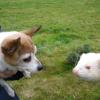
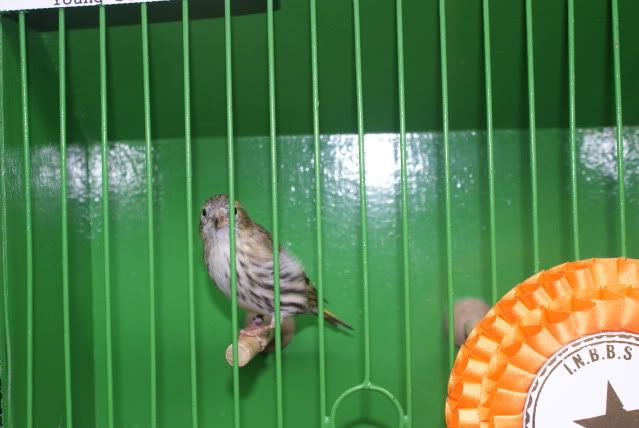

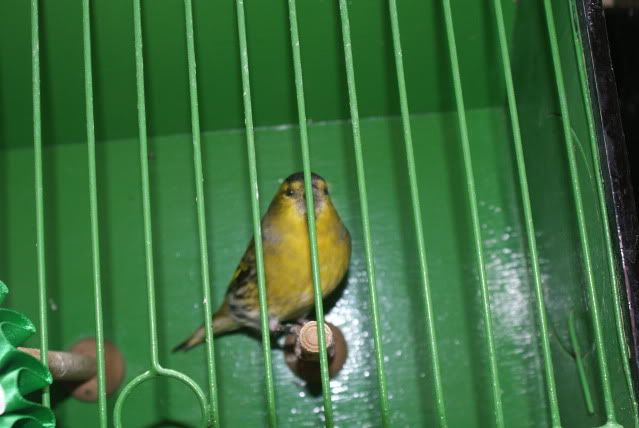
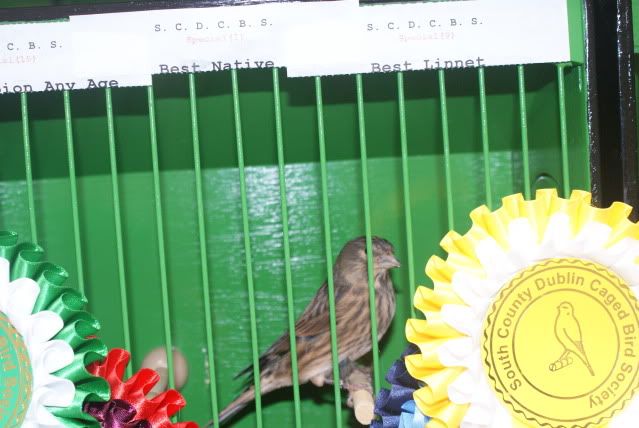
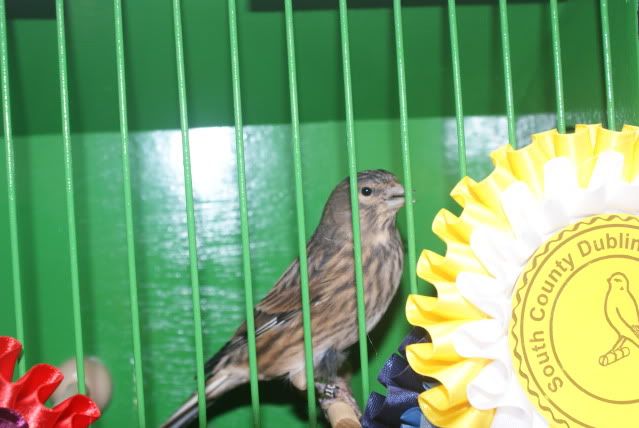
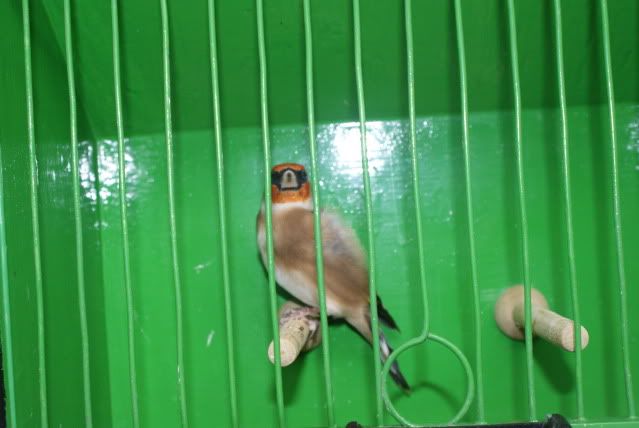
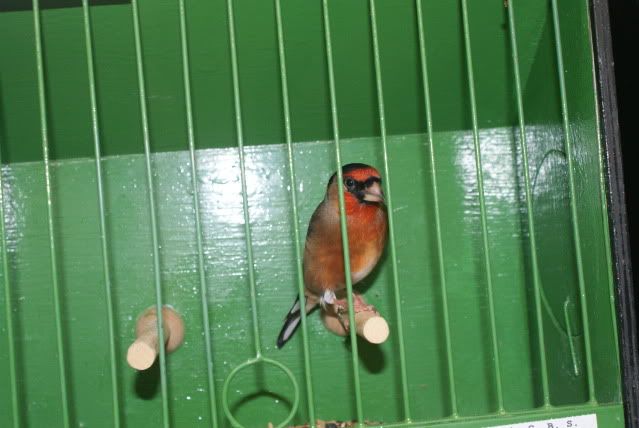
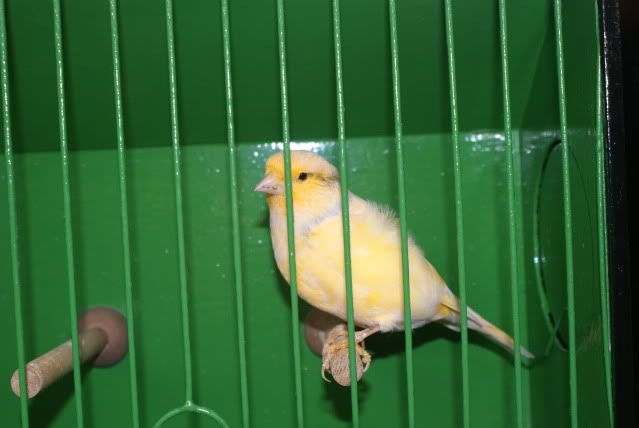
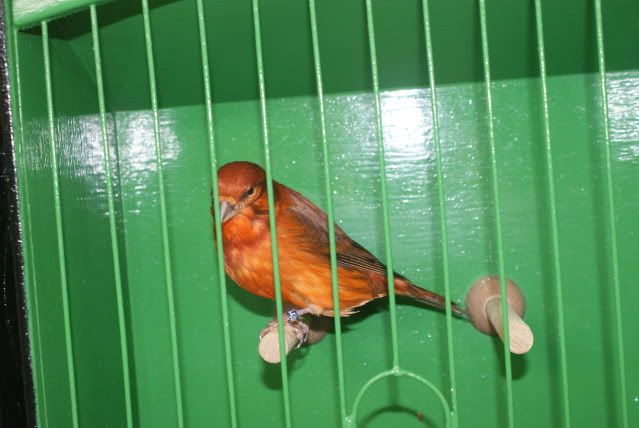
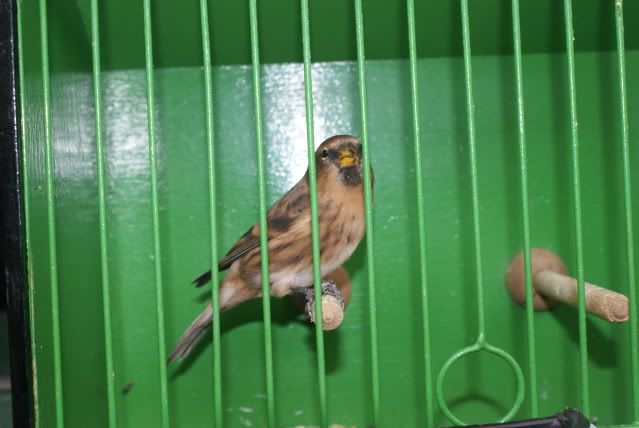

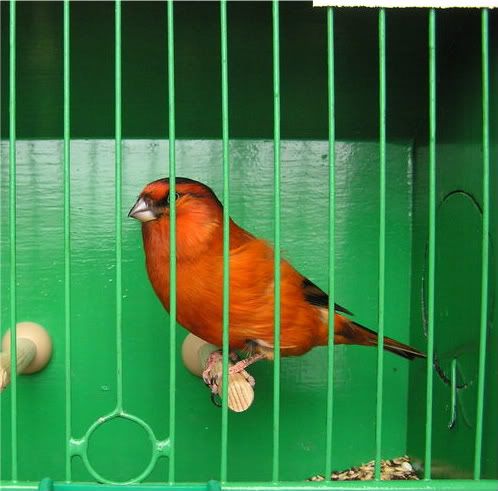
This season
in Cage and Aviary Birds
Posted
Well done, its not been a great season for a lot of people I know including myself, a credit to you.
Good luck with them.